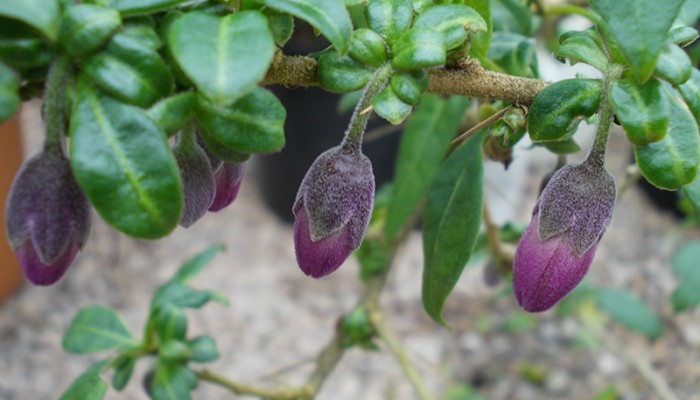This interesting and unusual semi-deciduous late winter and early spring flowering shrub is a monotypic, narrow endemic of Chile found scattered in the coastal cordilleras and Chiloé. It was first collected by William Lobb on Chiloé in 1848 during his second trip for the nursery of Veitch and Sons, but it failed to make it into cultivation. It was successfully introduced a decade later by another of Veitch’s collectors Richard Pearce from a mainland collection to the north of Lobb’s. It never appears to have established a foothold in cultivation despite have figured in the Botanical Magazine in 1863 and been included in several other publications of the time. In Hortus Veitchii it was included in the chapter of ‘Stove and Greenhouse Plants’ and it was also touted as a possible wall shrub before disappearing from gardens.
It is a shrub of 2.5 x 2.5 metres with spiny shoots and light green leave bearing beautiful magenta flowers typically in February-March (although can be a month either side). Semi-deciduous, the majority of the leaves at flowering time are small clusters of much reduced size leaving the flowers prominent. Flattened spherical pale-yellow fruits follow.
A member of the Solanaceae with typical poisonous belladonna alkaloid content; the name Latua is derived from the Mapuche Indian name Latué (‘causes something to die’) while the Spanish name of Palo mato (‘the tree that kills’) points to its standing in folk lore. It is often referred to as ‘The sorcerer’s tree’ in modern literature. Thus, careful siting and handling should be considered, but no more so than for other commonly grown toxic plants such as yew, monkshood, scopolia or laburnum which are common garden plants.
With us it has shown itself to be hardy to at least -8°C as a wall shrub and as equally hardy as a free-growing plant in a sheltered position with good sun protection from cold winds. It grows best in a rich, moist, free-draining soil, and is quite a gross feeder. A deep layer of mulch applied in autumn will help protect the base of the stems and roots, and should it be damaged by cold will re-shoot from the base.

